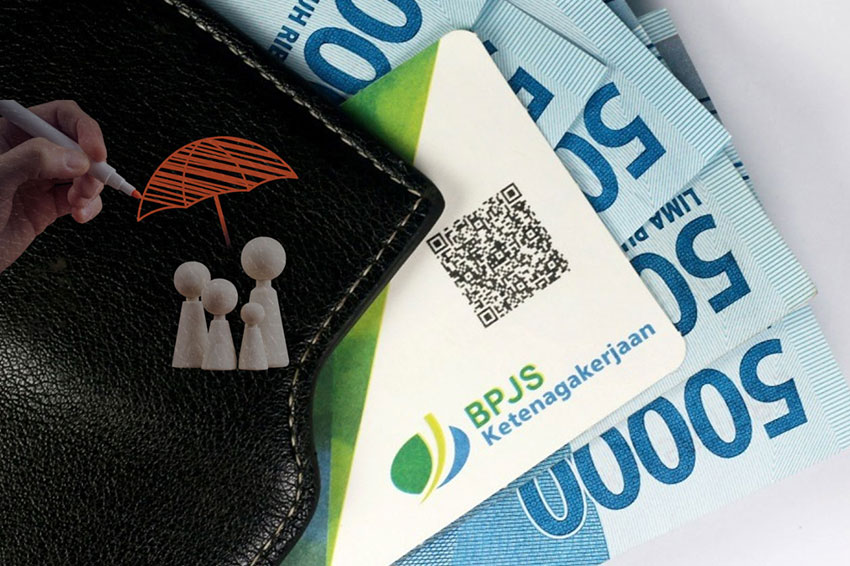
November 13-2025
By: Marisa
BPJS (Social Security Administrative Body) for Employment and Health is a mandatory right for every worker in Indonesia and a legal obligation for every company. However, HR teams often find themselves overwhelmed by the complexity of calculations, reporting requirements, and compliance obligations—leading to potential penalties, sanctions, or even legal disputes.
Managing BPJS is not simply about deducting employee salaries. It is a critical element of the payroll process that must be handled with precision.
Here are 5 Crucial Points that HR and Payroll teams must ensure to guarantee smooth and compliant BPJS administration.
1. Accurate Determination of Reported Wage Base
One of the most common mistakes is using an incorrect wage base for calculation. Not all salary components are eligible to be included, and not all companies fully understand the upper and lower limits set by the government.
Key Points to Note:
- Employment BPJS Wage Base: The calculation for Work Accident Insurance (JKK), Death Insurance (JKM), and Old-Age Security (JHT) is based on Monthly Wage, which consists of Basic Salary and Fixed Allowances.
- Upper/Maximum Limit: For JKK, JKM, and JHT, contribution calculations are subject to a maximum wage limit. Any amount above this limit will not increase the calculated contribution. Ensure your payroll system applies this limit correctly.
- Health BPJS Wage Base: BPJS Health contributions also use Monthly Wage as the basis, but the upper and lower limits differ from those in BPJS Employment.
Preventive Action: Conduct regular audits between internal salary reports and the data submitted to BPJS. Ensure that Non-Fixed Allowances (such as daily meal or daily transport allowances) are not included in the contribution calculation base.
2. Timely Registration and Reporting for New Employees
Every new employee must be registered promptly. Delayed registration or data updates not only violates regulations but also puts employees at risk. If a workplace accident occurs before registration, the company must bear all medical expenses.
Key Points to Note:
- Registration Deadline: New employees must be registered with BPJS Employment within 7 days after they start working.
- Family Data Updates: For BPJS Health, immediately report any changes in family status (e.g., marriage, childbirth) so that new dependents can access healthcare services.
Preventive Action: Integrate the onboarding process with BPJS registration. Make NIK (National ID Number) and Family Card (KK) verification mandatory before initiating payroll and BPJS processing.
3. Correct Allocation and Deduction of Contributions (Company vs. Employee)
BPJS contributions consist of two parts: the portion paid by the company and the portion deducted from employee wages. Errors in these allocation percentages may result in underpayment or overpayment of contributions.
Key Points to Note:
Program | Company Contribution | Employee Contribution |
BPJS Health | 4% | 1% |
Old-Age Security (JHT) | 3.7% | 2% |
Pension Security (JP) | 2% | 1% |
Work Accident Insurance (JKK) | Varied (0.24% – 1.74%) | 0% |
Death Insurance (JKM) | 0.3% | 0% |
Preventive Action: Use an Integrated Payroll System equipped with updated BPJS formulas. This ensures automatic and accurate deductions (1% for Health, 2% for JHT, 1% for JP) and accurate company contributions.
4. Timely Payment and Reporting
Late payment of contributions is one of the primary causes of penalties and fines. BPJS imposes strict deadlines.
Key Points to Note:
- Payment Deadline: BPJS contributions must be paid no later than the 10th of each month. If the 10th falls on a holiday, payment must be made on the previous working day.
- Impact of Delay: Late payments may result in penalties and temporary suspension of BPJS Health services for employees, which can trigger internal conflicts.
Preventive Action: Set automatic reminders in the payroll system or in the finance/HR team calendar. Always reconcile payments with the official BPJS Payment Receipt.
5. Updating the Status of Employees Who Resign (Offboarding)
HR teams often focus heavily on onboarding but fail to manage offboarding properly, especially regarding BPJS updates. Companies may continue paying contributions for former employees if the data is not promptly updated.
Key Points to Note:
- Termination of Membership: Immediately report the termination of Pension Security (JP) and Health Insurance (JKes) once the employee officially leaves. JP must be terminated to stop continuing contributions.
- Handling JHT: Support employees who resign or are laid off with their Old-Age Security (JHT) claims. This is a good offboarding practice and ensures a smooth process.
Preventive Action: Make BPJS deactivation a mandatory step in the offboarding checklist. Ensure you receive BPJS’s official confirmation letter of membership termination for company records.
Ensuring BPJS compliance reflects the company’s commitment to employee welfare and legal adherence. By implementing these five crucial points, HR and Payroll teams can minimize risks, avoid penalties, and most importantly, ensure that employees’ social security rights are fully protected.
Visit our website at https://campsite.bio/qqgroup and follow our social media channels for the latest updates on modern human capital management strategies.
Let’s work together toward a stronger Indonesia! 🇮🇩
